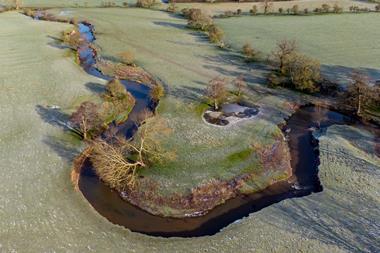A new lateral flow device could provide a quick and inexpensive way to detect levels of per- and poly-fluoroalkyl substances (PFAS) in drinking water at home.
The researchers from the Massachusetts Institute of Technology, US, who developed the device, say that with the growing concerns surrounding PFAS, selective sensing is ‘imperative’ for monitoring levels in the environment.
‘There is a major demand currently for detection of PFAS in our water,’ explains Collette Gordon, a graduate student at MIT who worked on the project.
‘A lot of people are unknowingly consuming and being exposed to PFAS in their daily life and it’s negatively impacting their health and the health of the environment,’ she adds.
‘While there are a lot of industrial sensors available, like mass spec, there’s not a way to quantify PFAS for everyday home usage … we really wanted to bridge the understanding of the chemistry of water to the public through a very rapid, inexpensive and portable sensor.’
The researchers designed a PFAS sensing platform based on lateral flow technology, the same approach used for rapid Covid-19 tests and at-home pregnancy tests.
However, in this design the test strip is embedded with a conducting polymer, called polyaniline. The polyaniline is deposited onto a strip of nitrocellulose membrane and coated with a fluorosurfactant to selectively pull fluorocarbons, such as PFAS, out of water droplets placed on the strip.
‘We use this polyaniline coating is because, upon introduction to PFAS, polyaniline oxidises and so it increases the conductivity, and we can measure that through an electrical readout,’ says Gordon. This allows users to quantify the PFAS levels in their water samples through resistance measurements.
Gordon adds that her team are now working on ways to improve the portability of the sensors with the goal of enabling anyone to be able quantify the PFAS in their water, regardless of their income or location.
The method can detect perfluorooctanoic acid (PFOA) at levels as low as 400 parts per trillion (ppt), with a limit of 200ppt for perfluorobutanoic acid (PFBA). ‘We’re still trying to decrease our limit of detection for better quantification, but we find our sensors are now applicable for areas where industrial dumping of PFAS is impacting the environment’.
Currently the sensor works for PFOA and PFBA, two of the most common PFAS in the environment, but the team are working to expand the test for the detection of other PFAS.
‘A major step forward in monitoring these pollutants’
Joanne Roberts, a research fellow at Glasgow Caledonian University who has conducted work on PFAS breakdown in the environment, says that if the device can be developed for widespread use, it ‘would be a major step forward in monitoring these pollutants in water’.
‘Usually we have to bring it into the lab – quite often we have to do a sample preparation stage where you have to clean the sample up or concentrate the analytes and that can give you problems with contamination of blanks, especially with PFAS,’ she explains.
Roberts says she could see the new test being of use in locations with landfill leachate and rivers where there is sewage outflow.
‘As it is low cost compared to current methods the number of test sites could be greatly increased to provide better information of the true extent of PFAS pollution, including private water supplies,’ she notes. ‘It would be interesting to see how the test performs in river water and areas considered at higher risk from PFAS pollution.’
However, she cautions that there remains a lot to learn about how to remove PFAS from the environment once detected. ‘PFOA has got a half-life of decades in the environment. If you break it down, you get CF4 – a fluorocarbon – and they are really potent greenhouse gases,’ she explains. ‘If you break it down to fluorine you form hydrofluoric acid, which is really nasty and toxic. It’s not an easy solution.’
References
S Park, C Gordon C and T Swager, PNAS, 2024. DOI: 10.1073/pnas.2317300121

















No comments yet